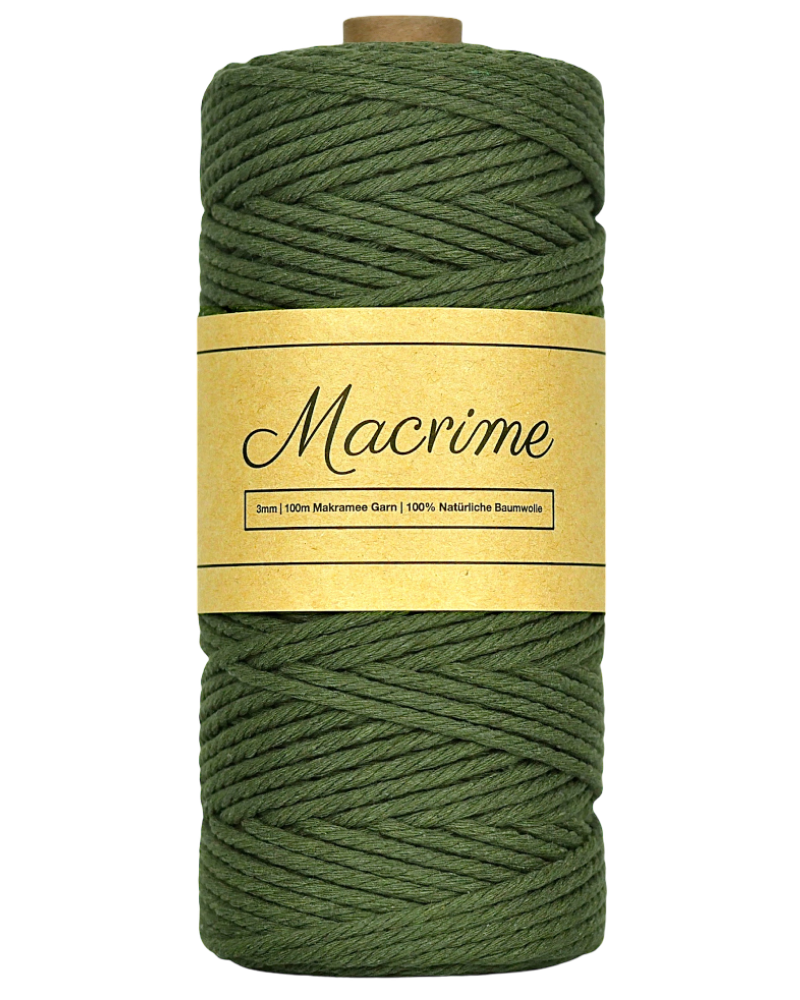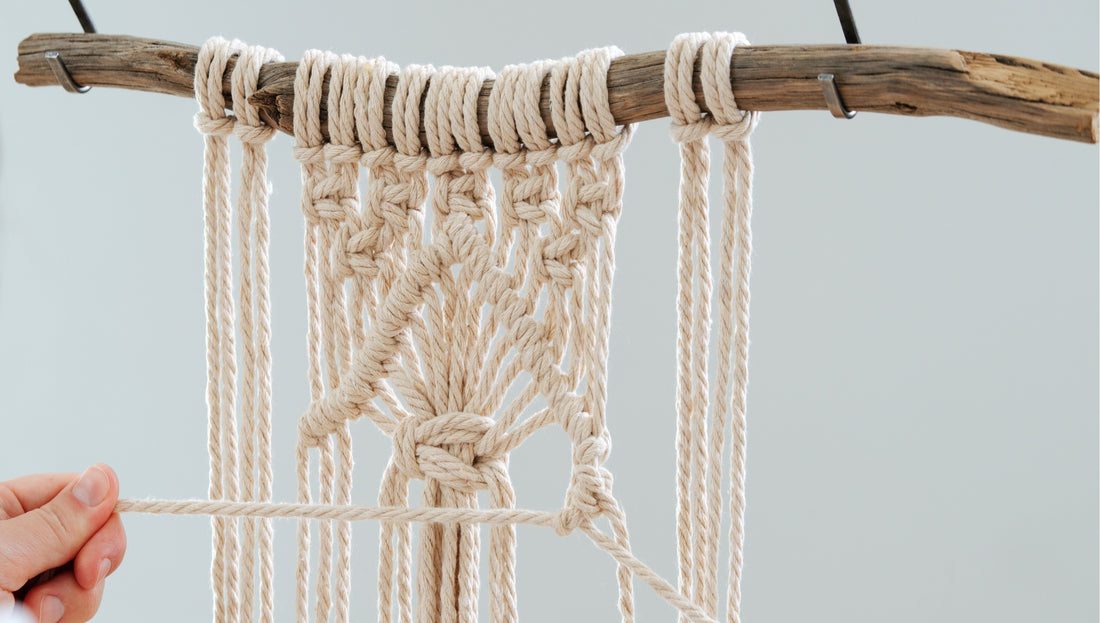Macrame DIY for beginners
Macrame is a millennia-old oriental knot art that has already experienced various heydays, but also went unnoticed for many years. However, thanks to a globalized world, art has become a worldwide DIY phenomenon in recent years. In addition to the almost infinite variety of knots, techniques and designs, the craft technique also enjoys great popularity for its therapeutic and meditative aspects. Whether hanging baskets, wall hangers, clothing or accessories, the uses of this craft are almost endless.
Find the right rope
Especially if you are a beginner, the sheer selection of yarns and ropes may overwhelm you a little. Which thread thickness is the right one depends mainly on what you want to make of it.
How do I determine the yarn count?
Macrame thread 2mm or a thread thickness of 3mm is ideal for very filigree works such as jewelry or key rings . For a macrame curtain for doors and windows, I also recommend a light yarn with a thickness of 3mm, as it is easier to "walk through" or you can see through it than with stronger yarn. 4mm Macrame Thread is a standard size that can be used for a variety of projects, making it ideal for beginners. For example, wall hangers, hanging baskets, coasters, dream catchers or bags can be knotted with it. This is the perfect blend of fine and thicker yarns which is ideal for training suitable because it is pleasant to work with, but also easy to untie if you have knotted (which is part of macrame! ;). But 5mm macrame yarn is also a good choice. You can also use this wonderfully for larger projects.
What is the difference between twisted and twisted rope?
The difference between "twisted rope" and "single strand cord" or "string" is mainly that the twisted rope consists of several layers of yarn and the twisted rope consists of only one layer of many yarns. One speaks here of 2-layer, 3-layer, 4-layer etc. rope, this has the quality that it has a higher breaking load, which is of particular interest for projects such as hanging baskets, the contents of which weigh several kilos.
Here you will find an overview of all twisted ropes in the shop .
Calculate the right rope length
Exactly how many meters you need for your project is not so easy to define. The required length depends on various factors, for example yarn strength or rope strength, type of knots, knot density or strength of your knots are decisive for the required yarn length for your macrame project. However, you can always calculate with a rough rule of thumb:
Use the rule of thumb to calculate the correct rope length
1. Example: A wall hanger with a length of 1.40 m made of 4 mm rope:
If you want to tie a macrame wall hanging with 4mm yarn or rope (regardless of whether it is twisted, braided or twisted) and your wall hanger is to be 1.40m long, you should plan at least 7m long ropes for this design (7m/1.40m = 5). Once the rope on the wooden stick or branch with a lark head fastened, the rope splits in half. So you start with cords of 3.50m. Now you have enough rope (2.10m) to tie a pattern of your choice. You can see how far you can get with this during the course of knotting. A macrame wall hanging does not always have to be "tied through" from top to bottom: unknotted areas often provide a welcome boundary for a new pattern, and give existing patterns "room to breathe". The exciting challenge here is to playfully use the existing rope in such a way that you are satisfied with the result.
2. Example: A hanging basket 1.30m long made from 3mm rope:
If you want to tie a 1.30m long hanging basket out of 3mm thick rope, we recommend starting with 4m long ropes. Once the ropes are hung on the wooden ring or metal ring, you have 2m long cords to knot. With a classically knotted hanging basket you start knotting the upper part and change the roles of the ropes after about 10-20cm knots (the previous working strand becomes the support strand and vice versa). Now you knot the next element until all ropes have reached the same length again before you knot the basket part.
Free ebook in the launch of macrame
We offer you and everyone else one free e-book for beginners with the various knotting techniques and initial projects when purchasing our yarns. The e-book explains exactly what materials you need and how to proceed, so that it is easy for you.


